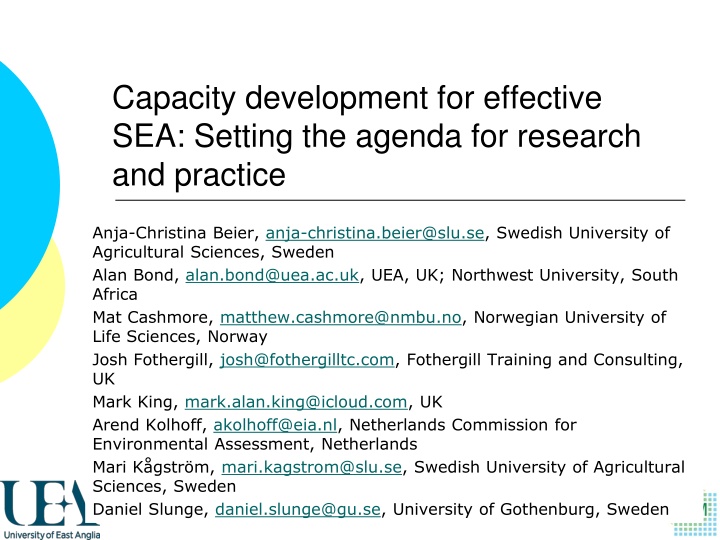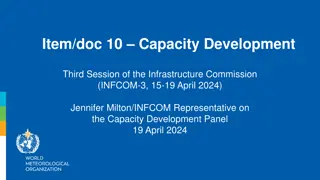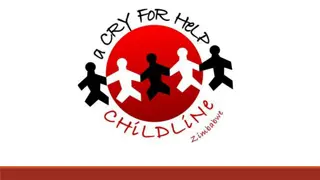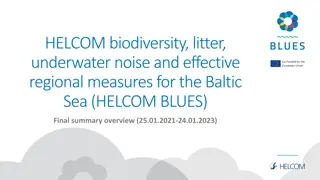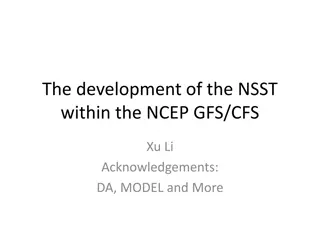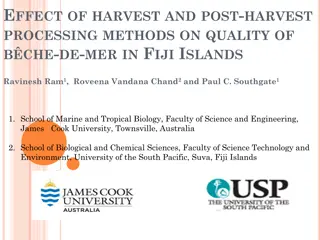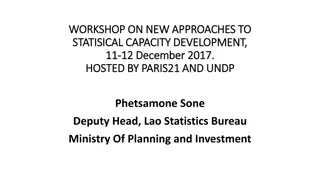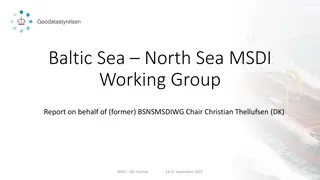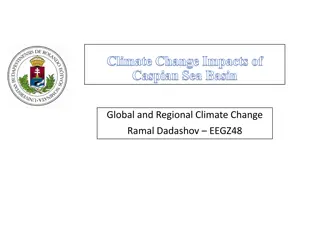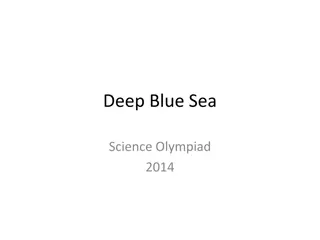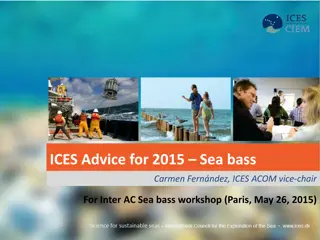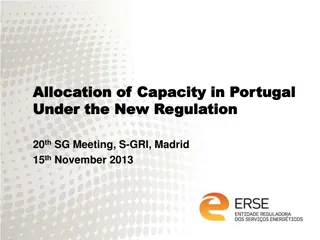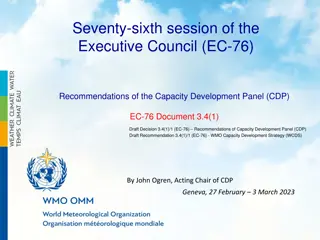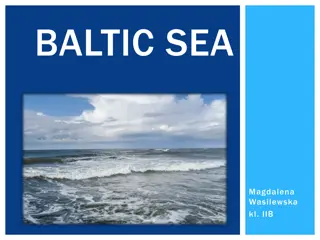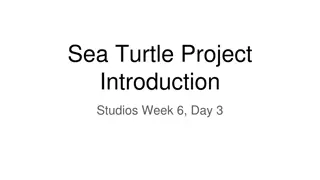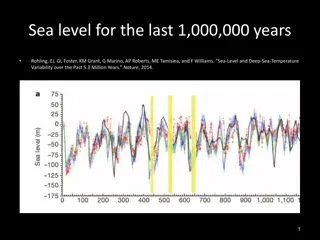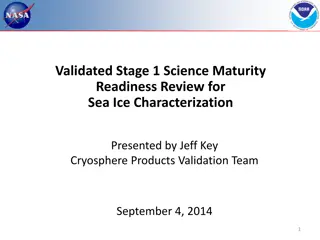Capacity Development for Effective SEA: Setting the Agenda
Addressing the need for a research agenda in capacity development for effective Strategic Environmental Assessment (SEA) to define and enhance capabilities. Explore the concepts, processes, and components involved alongside key questions for further exploration.
Download Presentation

Please find below an Image/Link to download the presentation.
The content on the website is provided AS IS for your information and personal use only. It may not be sold, licensed, or shared on other websites without obtaining consent from the author.If you encounter any issues during the download, it is possible that the publisher has removed the file from their server.
You are allowed to download the files provided on this website for personal or commercial use, subject to the condition that they are used lawfully. All files are the property of their respective owners.
The content on the website is provided AS IS for your information and personal use only. It may not be sold, licensed, or shared on other websites without obtaining consent from the author.
E N D
Presentation Transcript
Capacity development for effective SEA: Setting the agenda for research and practice Anja-Christina Beier, anja-christina.beier@slu.se, Swedish University of Agricultural Sciences, Sweden Alan Bond, alan.bond@uea.ac.uk, UEA, UK; Northwest University, South Africa Mat Cashmore, matthew.cashmore@nmbu.no, Norwegian University of Life Sciences, Norway Josh Fothergill, josh@fothergilltc.com, Fothergill Training and Consulting, UK Mark King, mark.alan.king@icloud.com, UK Arend Kolhoff, akolhoff@eia.nl, Netherlands Commission for Environmental Assessment, Netherlands Mari K gstr m, mari.kagstrom@slu.se, Swedish University of Agricultural Sciences, Sweden Daniel Slunge, daniel.slunge@gu.se, University of Gothenburg, Sweden
Introduction Why do we need a research agenda? We don't have an agreed concept of what capacity for effective SEA looks like It is not sufficiently clear what works in terms of capacity development Your role: We need help with questions in red text What questions are missing?
What is capacity development? Capacity development is understood as the process whereby people, organisations and society as a whole unleash, strengthen, create, adapt and maintain capacity over time OECD (2006)
Two themes Conceptualising capacity and capacity development for effective SEA Operationalising capacity development for SEA 1. 2.
1. What is capacity Capacity pyramid (Potter and Brough, 2004)
1. Capacity development and effective SEA Taking a three category typology for capacity used by aid agencies combined with literature on environmental assessment (Cashmore et al. 2019; Ministry of Foreign Affairs of the Netherlands 2011; UNDP 2009; Clemente-Fernandez 2005; Office of the Deputy Prime Minister 2004; Van Loon et al., 2010) And components of effective SEA systems taken from Dalal-Clayton and Sadler (2005)
1. Capacity development and effective SEA Elements of capacity development Description Sub-categories Components of effective SEA systems Enabling environment The broad social system within which people and organisations function, and which sets the context for their actions Legal system Political and administrative system Socio-economic environment Political stability Sound governance Clear role for NGOs and civic groups Environmental awareness of local communities Clear framework of law, regulation and policy Transparent procedure Guidance on implementation Defined agency roles and responsibilities Mechanisms for compliance and follow up, etc. Ability of practitioners to implement the SEA process, apply appropriate tools and perform the main activities to an acceptable level of competence and professionalism Organisations The internal structure, policies and procedures that determine an organisations ability to deliver its mandate and enable the coming together of individuals to work together Organisational structure Organisational culture Financial resources Human resources Infrastructure Leadership Learning Networks & external coordination Knowledge & understanding Technical skills Managerial skills Communication skills Behaviours Access to financial resources Access to networks Individuals: competencies and skills The skills, experience and knowledge held by individuals
1. Capacity development and effective SEA Linking with the international effectiveness study (Sadler, 2006), the table includes procedural and substantive effectiveness elements, raising questions: What is the substantive purpose of SEA? (SDGs, or something else?) How do we account for transactive effectiveness in capacity development?
2. Operationalising capacity development for SEA Capacity is not static: policies, staff, best practice expectations change Capacity development is therefore relevant in all countries Leads to a number of operational capacity development questions (covered in the following slides)
2. Operationalising capacity development for SEA Whose capacity, and what capacities, matter most? Contextual understanding is critical Does training of trainers actually improve effectiveness? What are the pinch points that prevent effective SEA capacity development (e.g. restrictions on participation)?
2. Operationalising capacity development for SEA How do capacity development needs change over time and in different institutional contexts? Is indigenous knowledge accommodated? Are capacity development efforts repeated due to inefficiency of past efforts, or changing needs? Is it possible to take long term perspectives of capacity development needs given budgetary mechanisms? How can capacity development programmes be coordinated?
2. Operationalising capacity development for SEA How can we (should we) regulate capacity? See IAIA (2019) EIA accreditation study results (40 out of 73 countries had some form of professional accreditation does it align with effective SEA practice?) Who should be regulated? What should be regulated? Under what conditions does regulation work?
2. Operationalising capacity development for SEA How can we maintain capacity (how can we best assemble and make available key learning)? How do we develop organisational memory? How do we manage knowledge? Are SEA knowledge centres required? If so what should they look like in the digital era?
Feedback http://www.environmentalassessme nt.net/capacity/
References Cashmore, M, M Smutny, J Jerzmanski, and M Bar (2019), Capacity and Quality Control Evaluation Framework. https://environmentalassessmentnet.files.wordpress.com/ 2019/01/training-swot-scheme-final.pdf Clemente-Fernandez, P (2005), Capacity Development for Environmental Impact Assessment the Spanish Public Institutions as a Case Study. MSc dissertation, University of East Anglia. Dalal-Clayton, B and B Sadler (2005), Strategic Environmental Assessment. A Sourcebook and Reference Guide to International Experience (Earthscan, London). Ministry of Foreign Affairs of the Netherlands (2011), Synthesis Report of the Evaluation of Dutch Support to Capacity Development: Facilitating Resourcefulness. The Hague.
References (cont.) OECD (2006), The Challenge of Capacity Development: Working Towards Good Practice. Paris. http://www.oecd.org/development/governance- development/36326495.pdf Office of the Deputy Prime Minister (2004), Skills for Sustainable Communities: The Egan Review. London. https://webarchive.nationalarchives.gov.uk/20120920045 241/http://www.communities.gov.uk/documents/commun ities/pdf/152086.pdf Van Loon, L, P P J Driessen, A J Kolhoff and H A C Runhaar (2010), "An analytical framework for capacity development in EIA - the case of Yemen", Environmental Impact Assessment Review, 30(2), pages 100-107.
